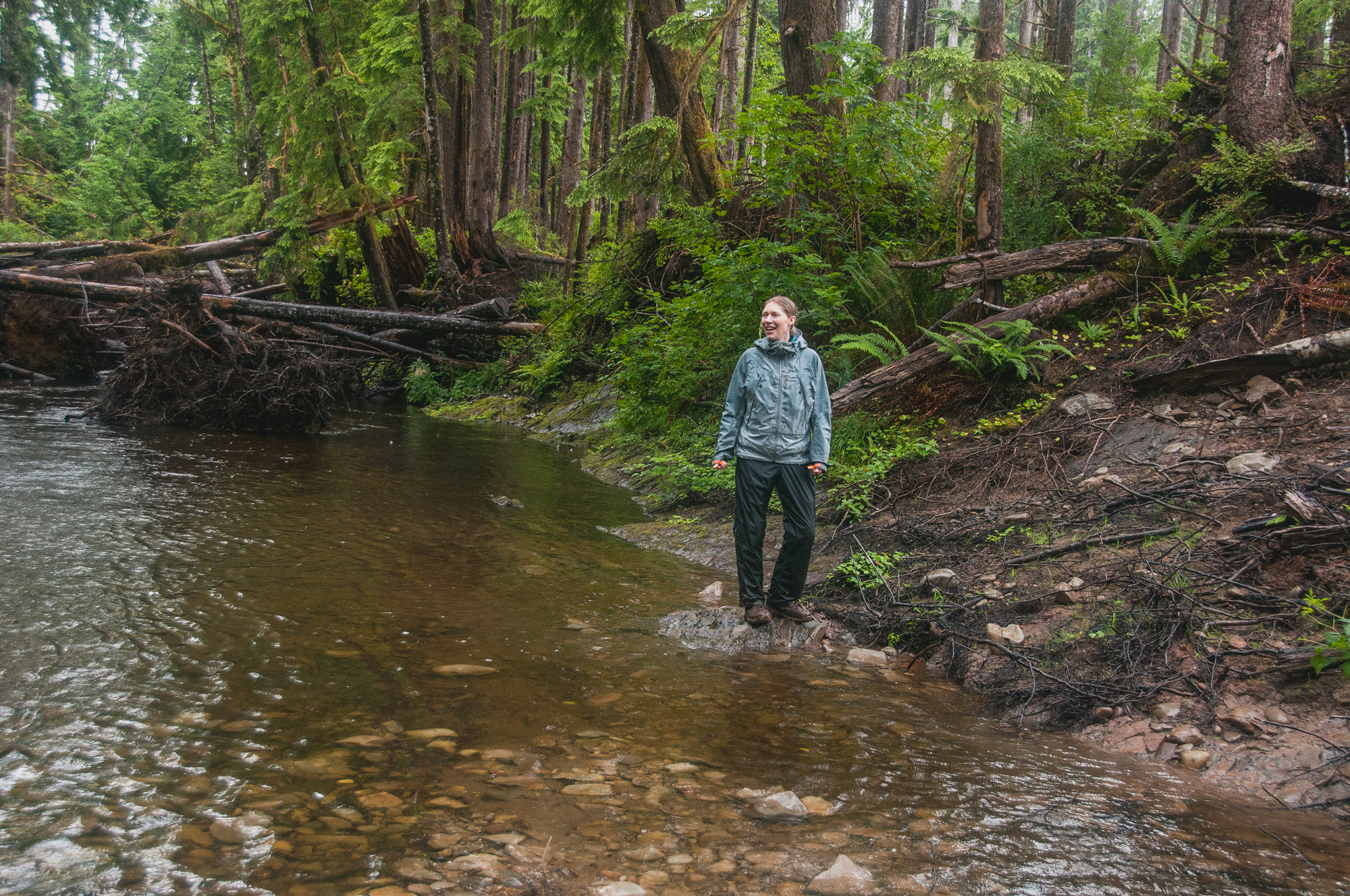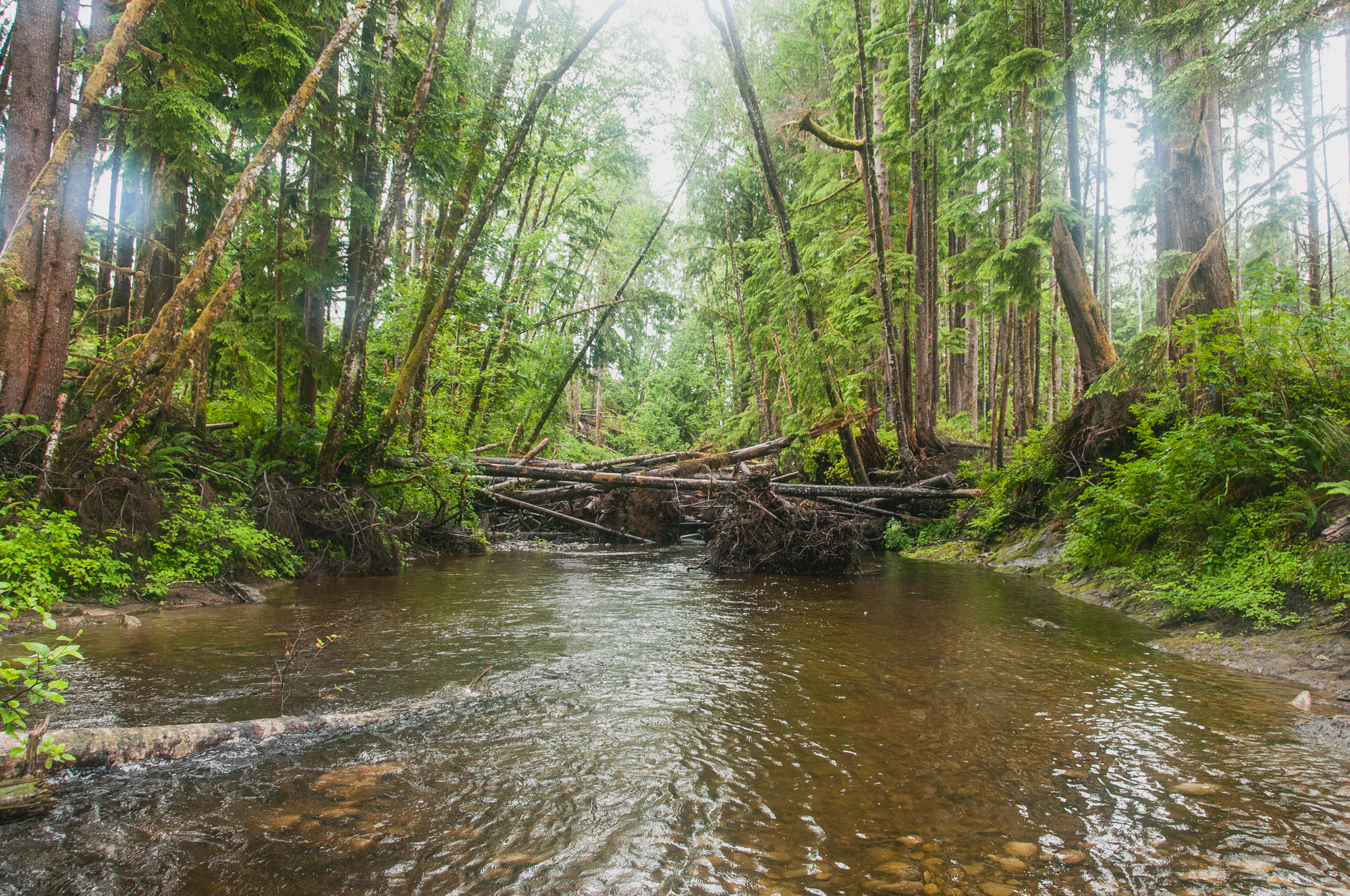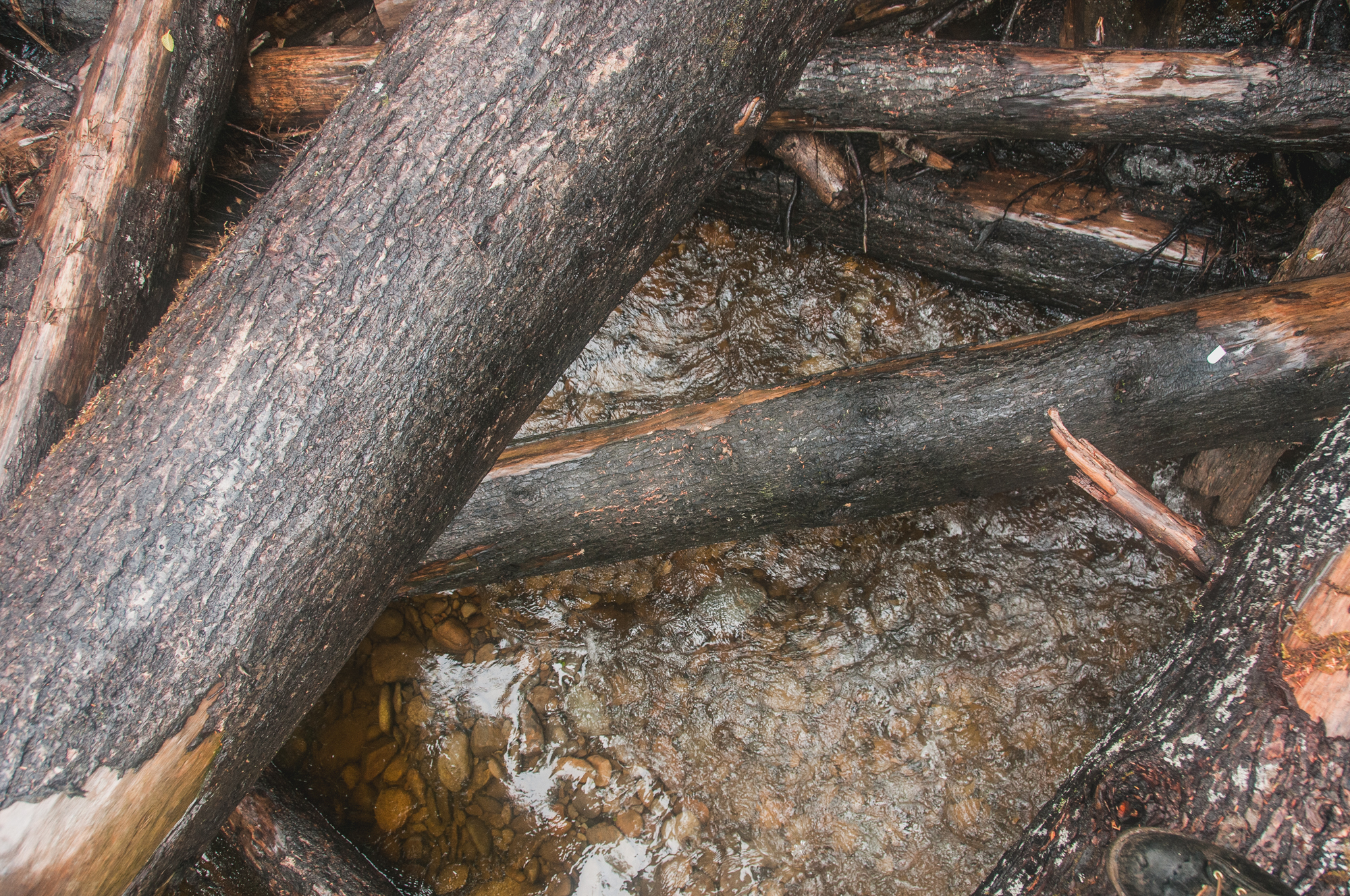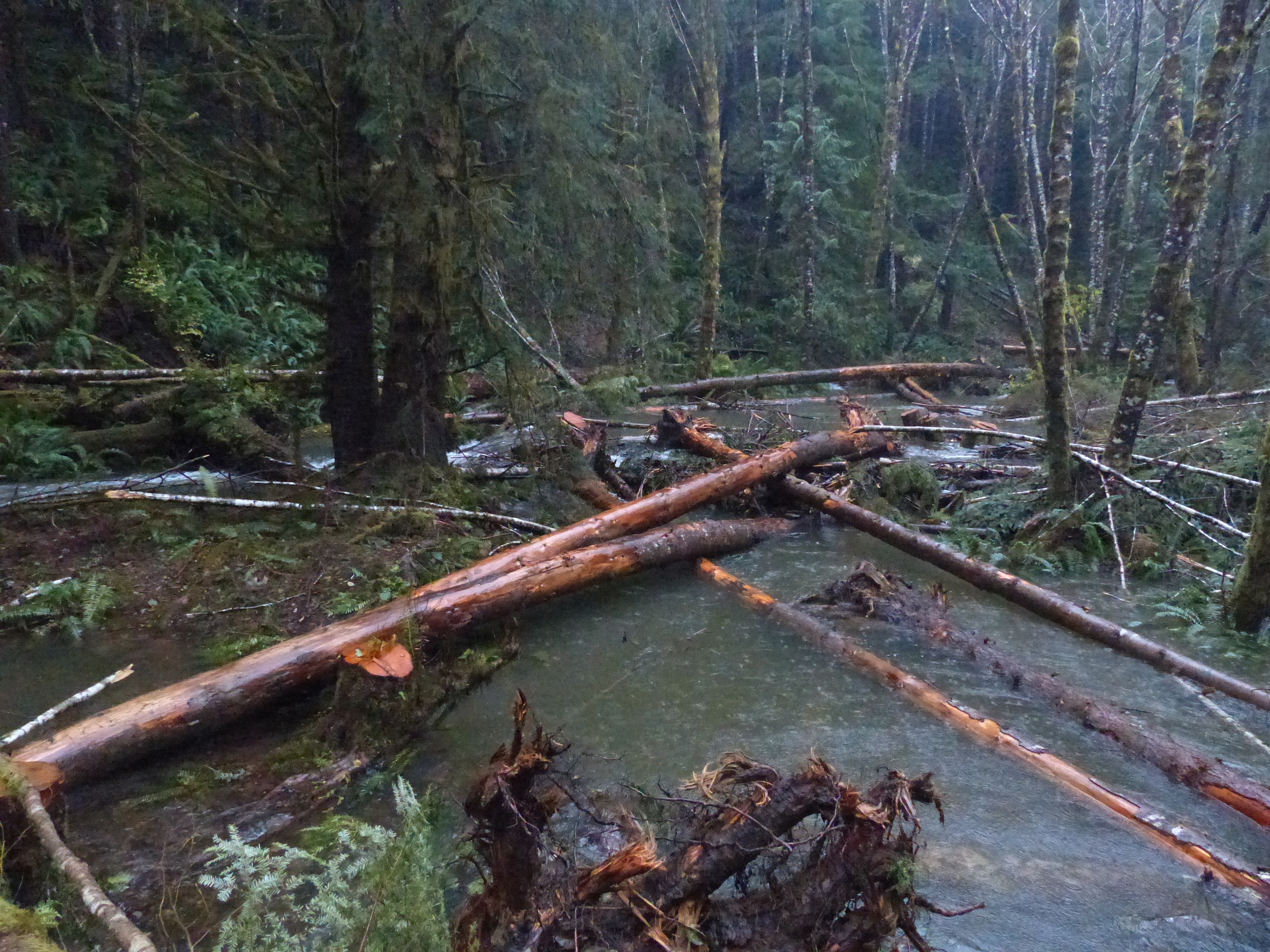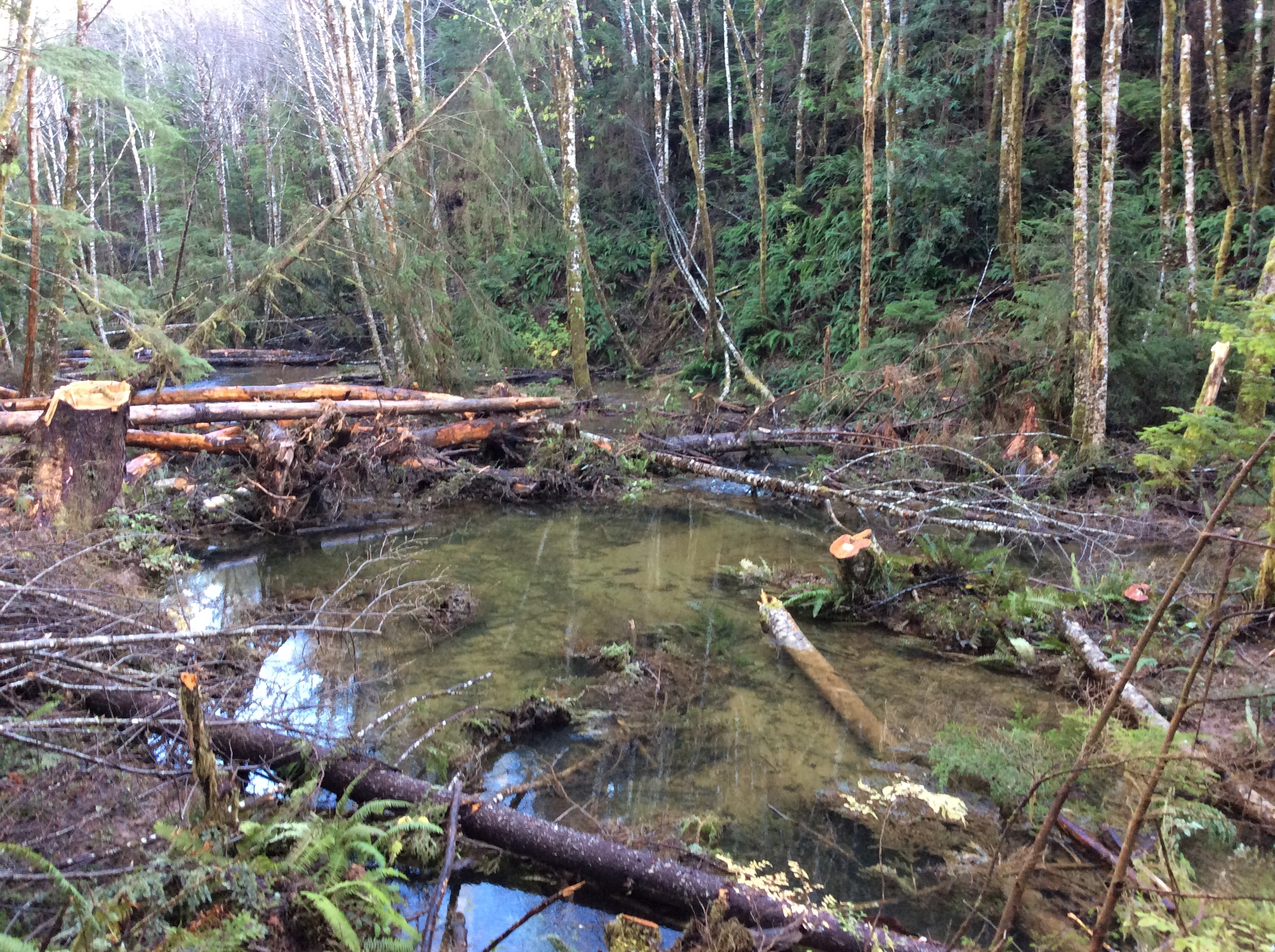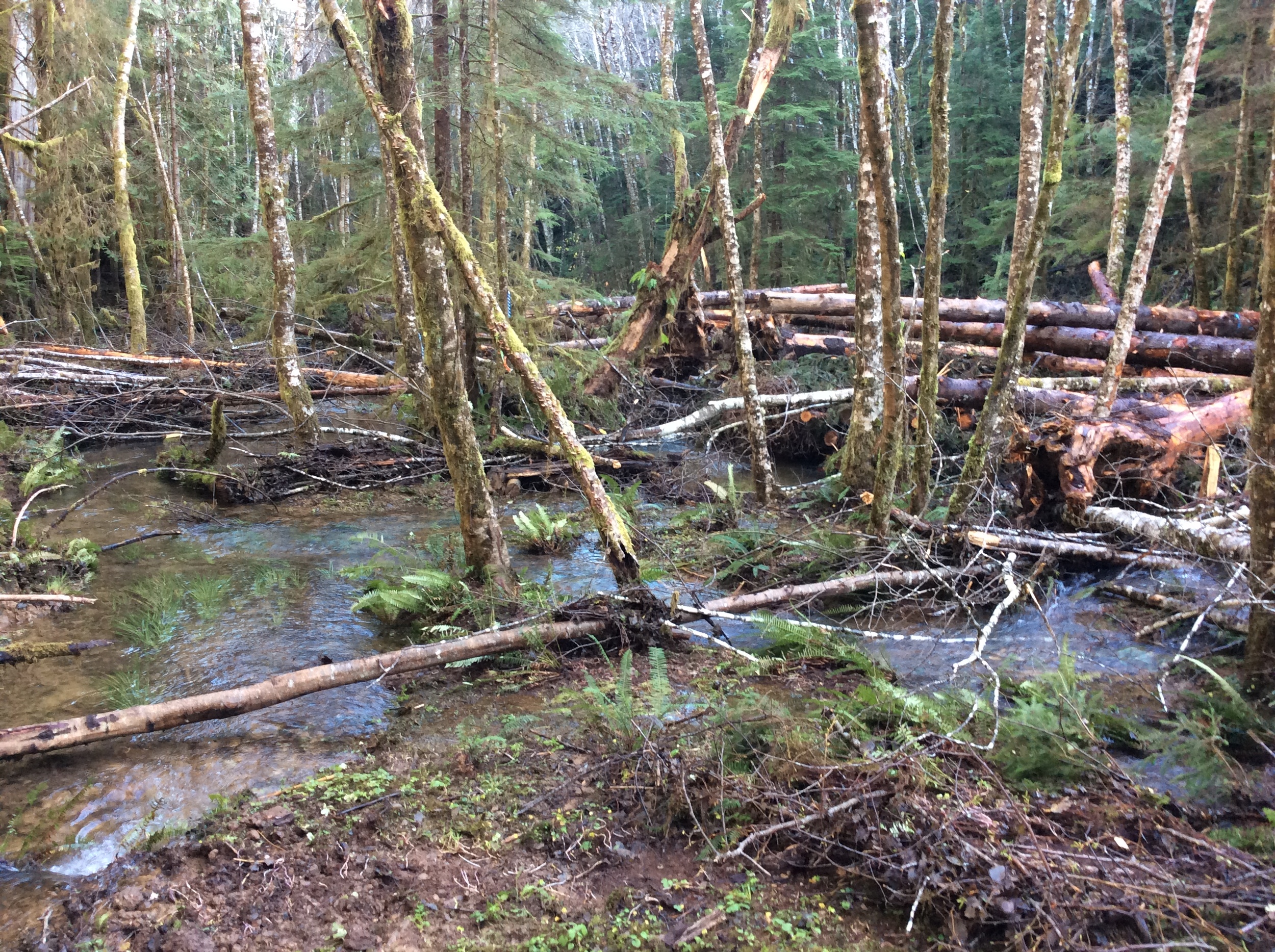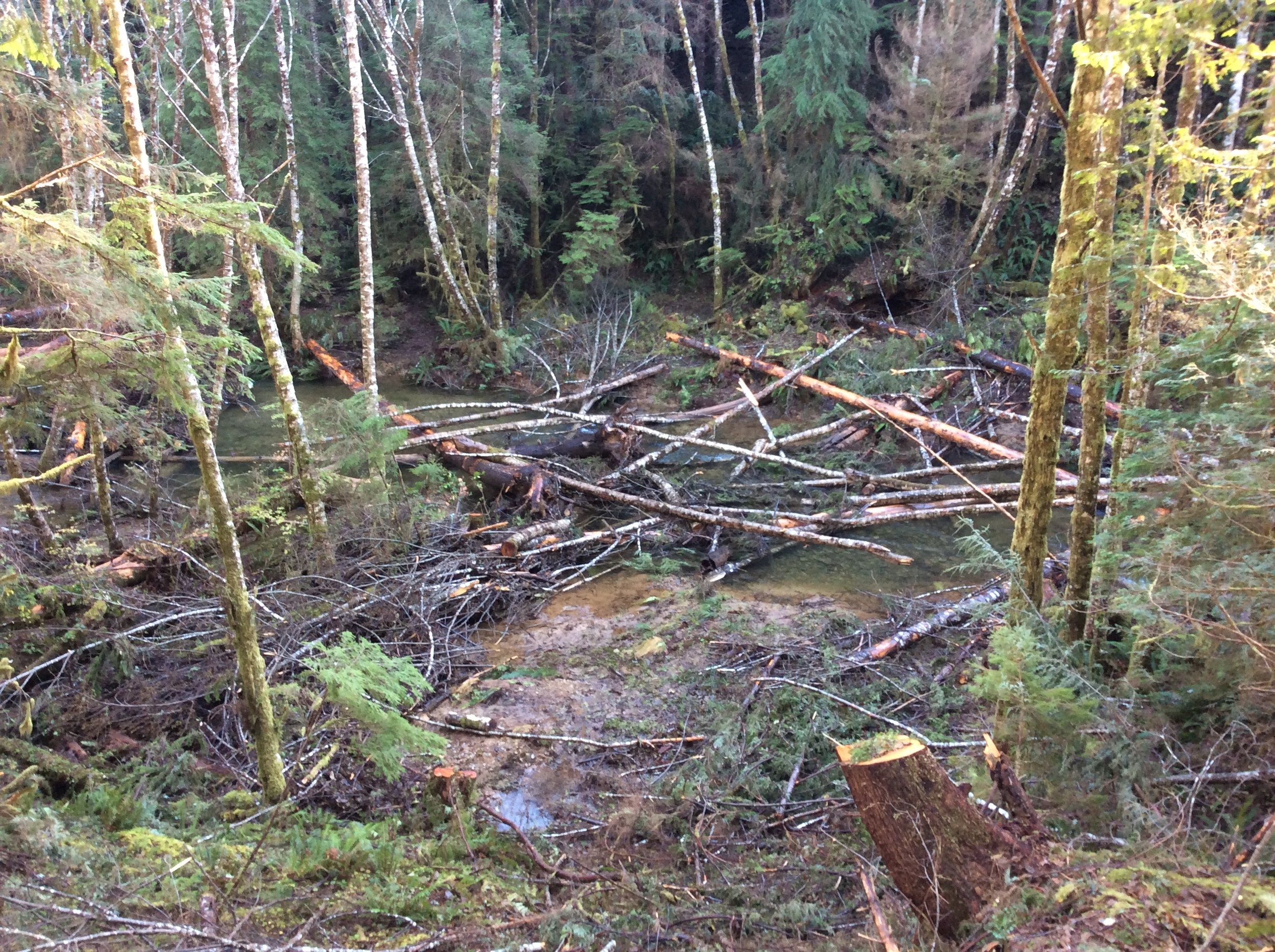Written by Jeanine Stewart, volunteer writer
Think of a Chinese finger trap. Those little woven paper toys have one thing in common with a log jam: they tighten up with the application of outside force.
This is the type of contraption our Willapa Area Forester David Ryan is helping to install 47 times over down a one-mile stretch of Ellsworth Creek.
It’s part of the Ellsworth Creek restoration project – a major component of our overall restoration strategy for the 8,100 acre Ellsworth Creek Preserve.
The plan may sound like a head scratcher. After all, could there possibly be environmental benefit from jamming up certain points in the river with logs? The short answer is yes.
For one, log jams restore complex structure to the ecosystem in this section of the river. Literally and figuratively, these logjams provide a cascade of many benefits that help rehabilitate the watershed.
Decades ago, people engaged in what they termed “stream cleaning” – getting rid of the wood in the water – in an effort to improve the salmon habitat, Ryan says. He adds this backwards thinking created an oversimplified and more sterile riverine habitat. The salmon need the wood in the water to foster spawning habitat, security structure and also for nutrient cycling.
The log jams also re-engage floodplains – that area of low-lying ground adjacent to the river – in order to restore the habitat. This is important since floodplains create productive forests, store and filter water for streams and create a complex stream structure, which supports larger and more diverse fish populations. In return, healthy salmon populations help return nutrients to the forests as they complete their life cycle.
But for Ryan, there are far more benefits than simply the outcome of this project. For him, the beauty lies in the journey.
He gets up every morning knowing he's about to head out into the wilderness, into the thick of the forest along Ellsworth Creek, to direct the installation of these log jams. Each of the 172 trees he’ll have installed by September takes anywhere from 10 minutes to one hour, as each presents its own unique problem to solve.
"It's so much fun and it's so out of the box," he says, "because the intent of the project was pretty extensive, as the engineer said this was the rehabilitation of an entire system. So right there, when you look at it from that perspective, that's out of the box."
Similar projects of this sort will start with one, or maybe up to three log jams. He's already done over 30 and is well on his way to completion of all 47 by September, all using trees that were already scheduled to be felled as part of our other work on the preserve.
Ryan helps direct the process of cutting the trees down and then placing them in the water by lowering them, via lines attached to cranes, into the stream. This means relaying plans to the loggers and ensuring that when the cranes lift the logs up and then lower them into the streams, they land in the correct place. Besides the excitement of the sheer magnitude of this project, the capabilities, dedication and hard work of the people Ryan works with are a major part of the thrill for him. That includes Natural Systems Designs and its engineer Mike Hravocek, who surveyed the stream and drew up the plans; as well as White & Zumstein, who have been contracted to do both the logging and the installation.
“From the landing to the creek, the sawyers, equipment operators, chasers, and rigging crew worked hard in a challenging environment and not only did a great job with the logjams but the logging as well,” he explains. “The rigging crew was particularly noteworthy for their ability to understand the purpose of each design and make those designs manifest on the ground as they were drawn up and intended. The whole crew understands the physical forces at work, has a positive attitude and is very mindful, which makes me feel a lot safer on site and makes compliance a lot easier. And their innovative approach to using heavy equipment for a different purpose makes this project a lot of fun to be part of.”






